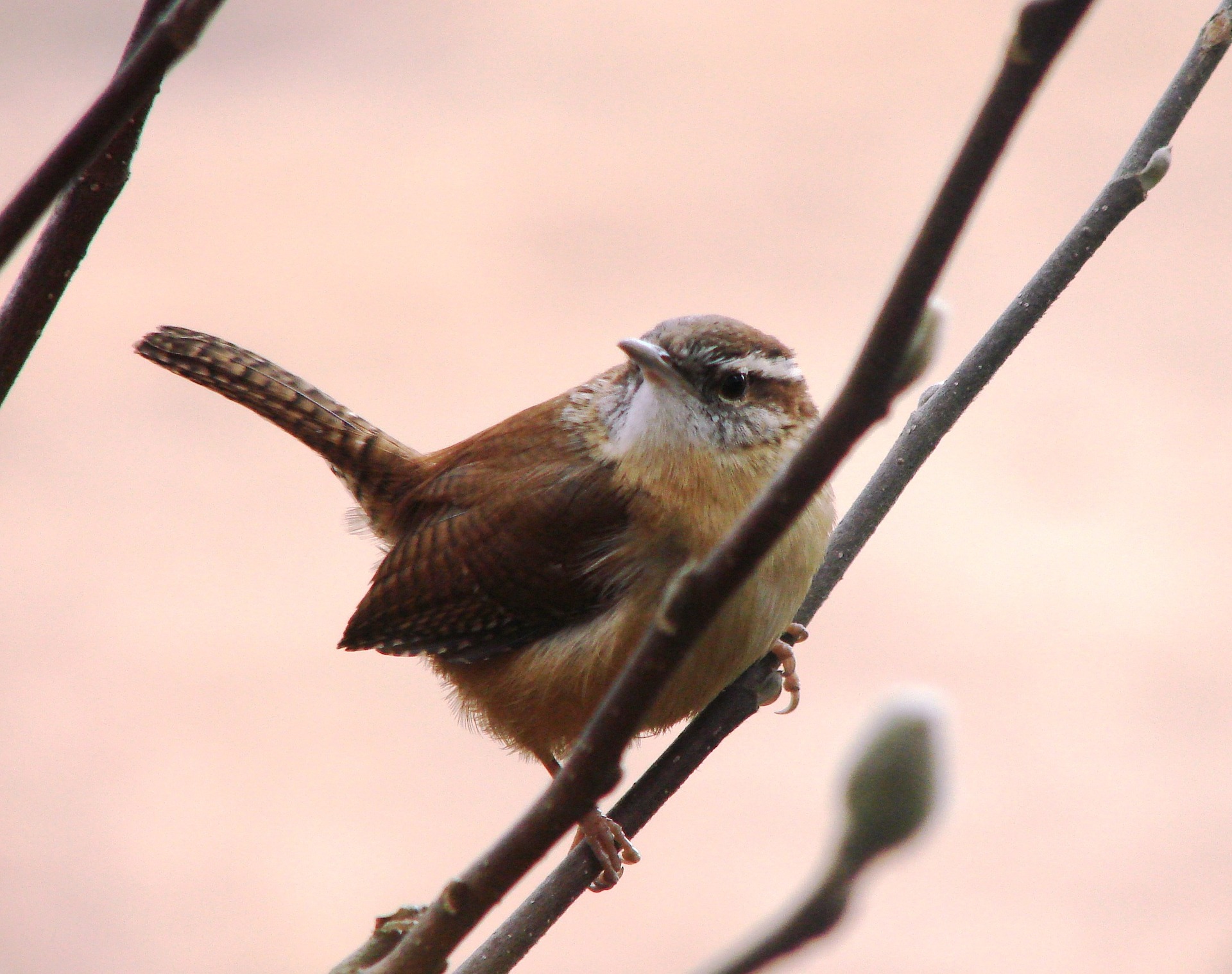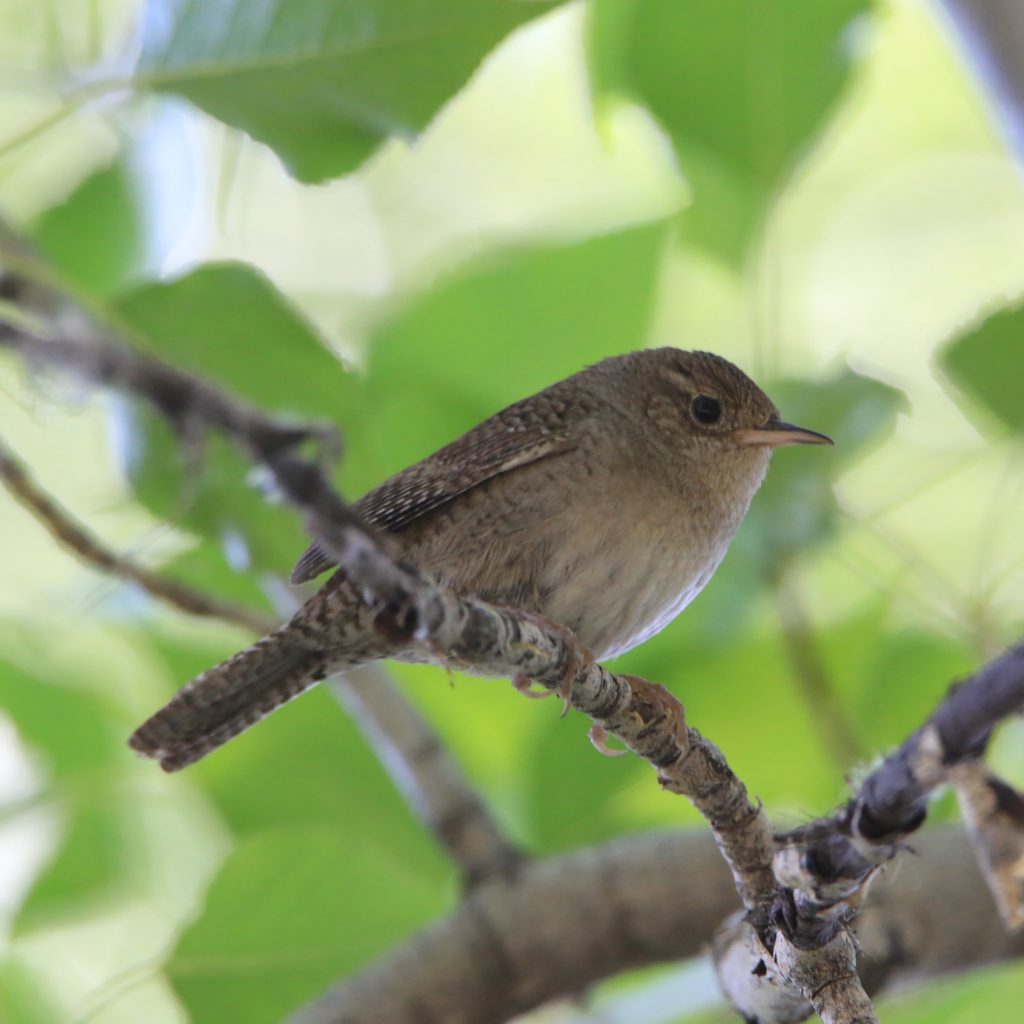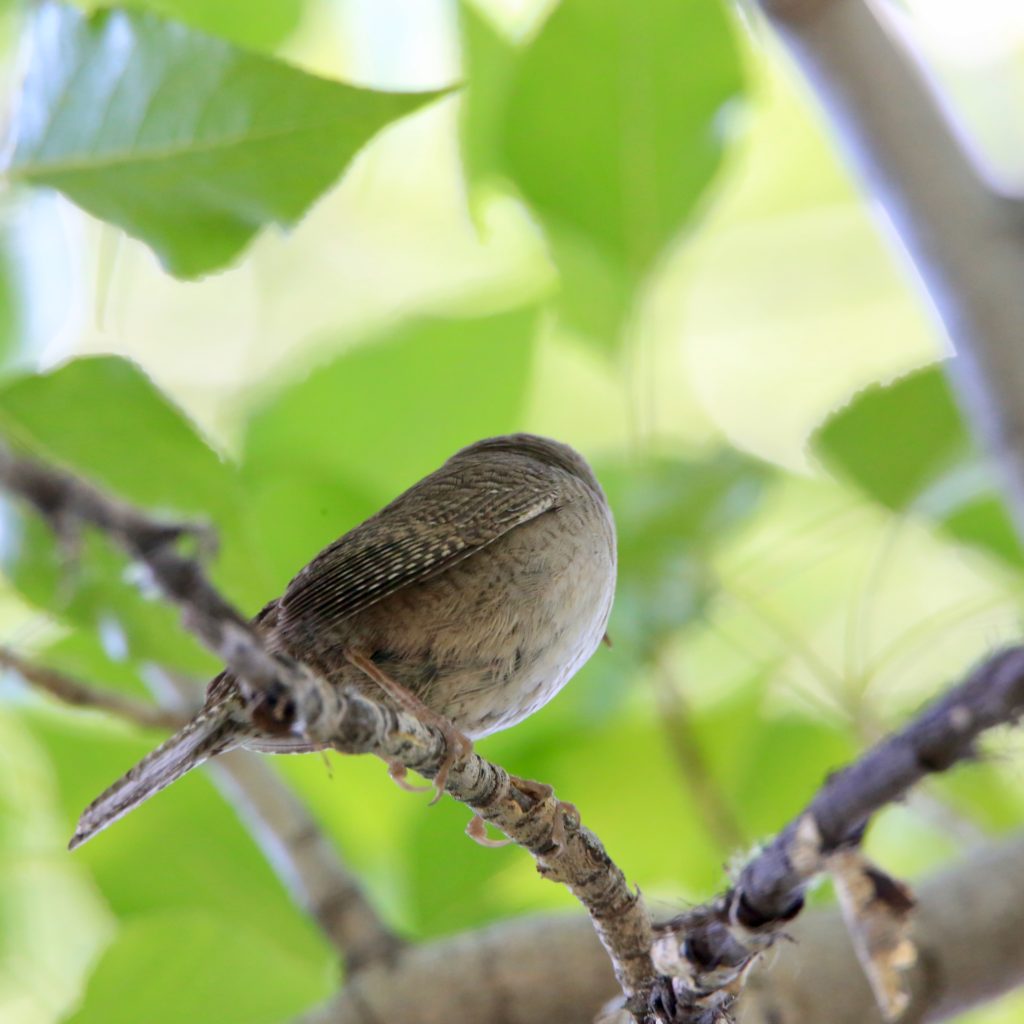
The House Wren
A House Wren is a fun bird to see while bird watching. Below are some tips to help you identify House Wrens. We have also put together a list of fun House Wren t-shirts, House Wren bird patches, bird houses, bird feeders, binoculars, stickers and other fun bird watching items.
About House Wrens
The house wren is a small brown backyard bird with an endearing voice and resides in the western hemisphere. They frequent birdhouses and nest boxes, building their nests in boots and old cans.
Description and Identification
Both the male and female House Wrens have a similar colour. The upper part of their bodies are of a faint grey or reddish-brown colour and the lower parts are of different colours ranging from grey, whitish-cream, and brown. House Wrens are generally small and are devoid of any distinctive marks. Wrens, in general, have the trait of keeping their tail erect while resting on a tree branch. Their bills are fairly long and bent and have a vague eye-ring. The brown colour is spread throughout the body except for their throat and chest which are of a slight grey hue.
House Wren Color pattern
House Wrens are all over brown with darker wings. They have a unique characteristic where they have pale eyebrows which is paler in the house wren more than any other species of Wrens.
House Wren Size
House Wrens are small and compact birds with flat heads with a fairly long curved bill. They have short wings and a long tail which they keep up in line with their body or slightly lower. Adult House Wrens have respective measurements of:
- Length 11 – 13 cm
- Weight 10 – 12 g
- Wingspan 15 cm

House Wren Behavior
They are an energetic bunch hopping around low branches with speed. Over the summer and spring period, they tend to change their tune and song. Pairs last only for the breeding season and they choose new mates the next year. Single males compete for females even after they start nesting. Most of the time the outsider wins the contest and displaces their rival.
House Wren Food
The typical diet of House Wrens consists of small insects like bugs, spiders, beetles, flies, and grasshoppers. In order to satisfy the calcium intake, they consume snail shells too, which is rich in calcium. At the time of winter, when the number of insects is less, they tend to move on to eating some varieties of fruits including berries and apples. You can easily spot a House Wren in your garden if there are quite a number of insects nearby or some fruits are left behind for them. They are known to forage shrubby areas, grounds with grassy plants, and the edge of woodlands.
House Wrens have a wide variety of spiders and insects including beetles and caterpillars. They also have a taste for more fast-moving insects like flies and leafhoppers. They get calcium from eating snail shells and drink from nearby streams and homemade bird perches.
House Wren Habitat
House Wrens can easily be spotted in small towns and one can even pick out their location from their backyard. They usually keep to the suburbs and artificial bird-houses and shrubby areas in the forests. Since humans have been able to break apart big forests into smaller parts, these birds have taken up these spots as nesting sites. They tend to remain at the edges of forests. They prefer the comfort of shrubby layers and are able to nest in gardens, wetlands, open lands, and such. It is normal to witness House Wrens in savannas and grassy regions in the warmer regions of the U.S during winters.
House Wrens reside in open forests and forest edges with openings of scattered grass. They are common in backyards, farmyards, and parks. Over the winter period, they prefer thick thickets and hedges.
Range and Migration

House Wren is one of the most common native birds in the Western Hemisphere. They are seen in Canada and South America. House Wrens are also spotted in several parts of the Caribbean islands. House Wrens are widely seen in suburban areas. Most of the House Wrens residing in Canada and the U.S migrate to warmer areas including the southern part of the United States or seek shelter in Mexico during winter to escape the extreme weather and to find better sources of food.
Nesting
True to their name, House Wrens are inclined to nest near human settlements such as in the garden or in human-made nests. Nearing September, the male House Wrens arrive earlier after migration and start setting up multiple nests for breeding. These nests are made solely by the males using twigs, dried bark, wool, spider web, and soft leaves. The nests are built in cavities of trees, woodpecker holes, or in gardens, at least one meter above the ground. The females, after choosing a male to breed with, selects a nest and completes the nest. House Wrens are usually monogamous but sometimes, the males choose to have more than one partner and the females may mate with other males too.
House Wren Lifecycle
House Wrens re-purpose old woodpecker holes and nest boxes to build their nests. They pile twigs into the nesting sites, either to make a bed or soft-lined cup. The female lays a clutch of 3 to 10 eggs and incubates them for a period of about 16 days. The hatched chicks fly away from the nest 15 to 17 days after they have hatched.
Ornithology
Bird Watching Academy & Camp Subscription Boxes
At Bird Watching Academy & Camp we help kids, youth, and adults get excited and involved in bird watching. We have several monthly subscription boxes that you can subscribe to. Our monthly subscription boxes help kids, youth, and adults learn about birds, bird watching, and bird conservation.
Bird Watching Binoculars for Identifying House Wrens
The most common types of bird watching binoculars for viewing House Wrens are 8×21 binoculars and 10×42 binoculars. Bird Watching Academy & Camp sells really nice 8×21 binoculars and 10×42 binoculars. You can view and purchase them here.
House Wren T-shirts
If you love the House Wren you should purchase a Bird Watching Academy & Camp T-shirt. To help support bird conservation we donate 10 percent to bird conservation activities.
House Wren Iron On Patches
Kids, Youth, and Adults love to collect our Bird Watching Academy & Camp iron on patches. Our bird watching patches help you keep track of the birds you have seen an identified. You can also display the patches on our Bird Watching Academy & Camp banners.
The House Wren is a great iron on patch to start your collection with. The patches are durable and can be sewn on or ironed on to just about anything.
House Wren Stickers
Stickers are a great way for you to display your love for bird watching and the House Wren. We sell a monthly subscription sticker pack. The sticker packs have 12 bird stickers. These sticker packs will help your kids learn new birds every month.
Bird Feeders For House Wren
There are many types of bird feeders. Here are our favorite bird feeders for your backyard. We use all of these bird feeders currently. Kids will have a great time watching birds eat at these bird feeders. Using this collection of bird feeders will provide a wide variety and many types of birds.
Best Bird Houses for House Wren
There are many types of bird houses. Building a bird house is always fun but can be frustrating. These 4 bird houses have become our favorites. Getting a bird house for kids to watch birds grow is always fun. We spent a little extra money on these bird houses but they have been worth the higher price and look great.











